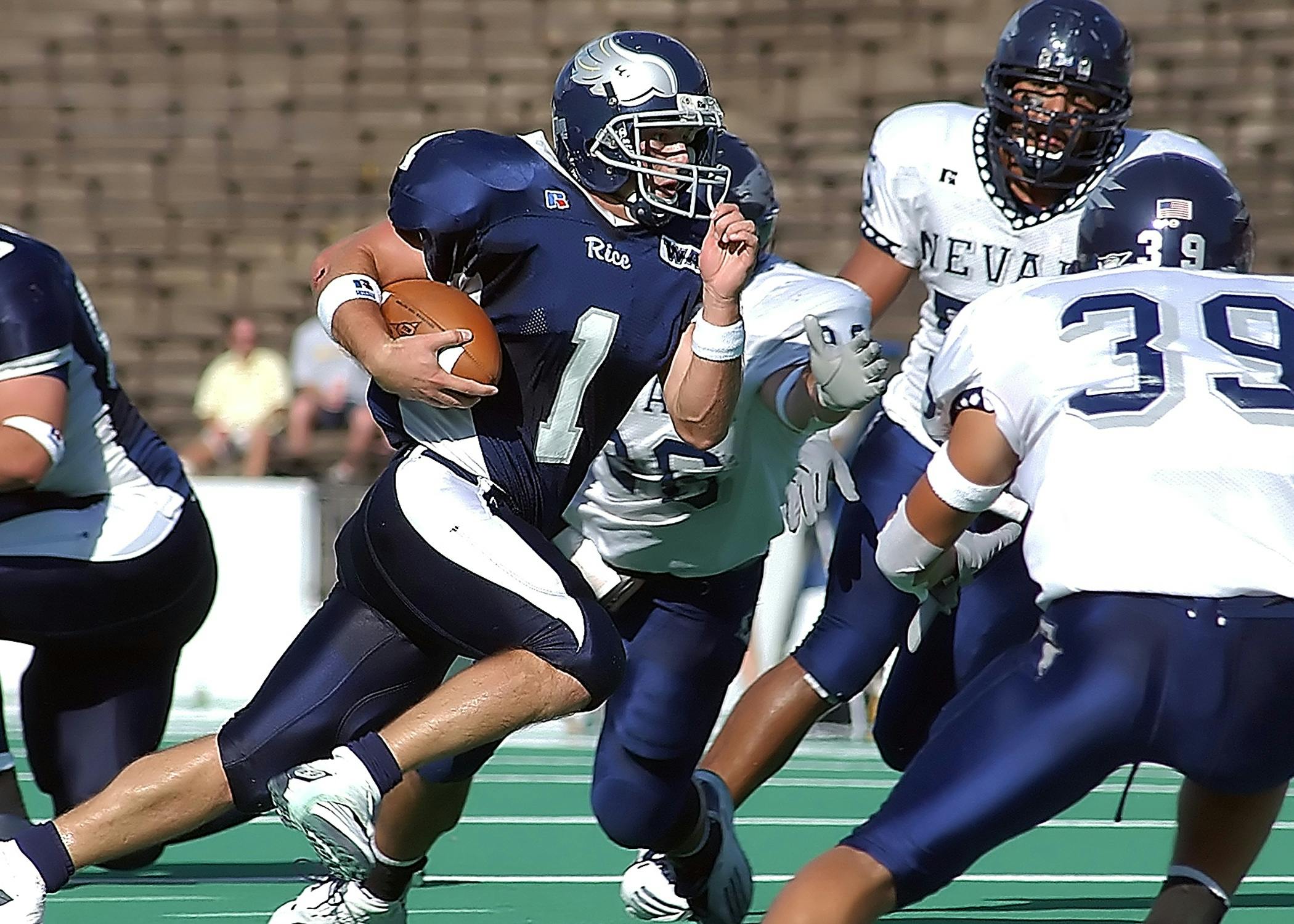College Football and Playing a Different (Sales) Game

Look, in the sales advisory/training/coaching business, I’m asked to help people improve their sales teams. I’m pretty good at it, too.
But you know what? It’s hard work to make your sales org your competitive advantage. It’s a lot of management, accountability, coaching, motivating, and more.
And there may be a better way for you to grow.
Let’s look at college football for a few thoughts on that. Specifically my Tennessee Vols.

I was concerned this wouldn’t age well, so I didn’t write it till now. My beloved Tennessee Vols are 3-0, with a win over a ranked opponent outside the conference for the first time, I think, in 43 years.
In early 2021, Tennessee hired their 5th head coach in 12 years. Not a great record. The guys keep losing. Two were attempts to steal some of Alabama’s glory, and one was a guy who seemed to have some magic.
They may have gotten something right with Heupel, though I’m not saying he’ll win the natty anytime soon. Heupel does something MOST college football fans should want, but can’t, because it’s too reasonable:
He gives the team he coaches a chance to win 8-10 games consistently. (And for most teams, that should be the goal. But boosters are human, and given to fantasy, and like to spend money, so ADs and presidents listen.)
How does he do it without being Georgia, Alabama, Clemson or Ohio State? (Think of the 800 pound gorillas in your industry.)
He plays a different game. And I’m going to make the case on why you should, too.
The below is a little study on the game of football. And should help you as you look at your pipeline, your business model, and market.
This gets football wonky, but is helpful if you can press through.
First, Heupel lines his receivers out incredibly wide, usually outside the numbers on the field. Most teams don’t do this, and in college we coached cornerbacks never to go outside the numbers.
The reason he does this? It stretches the defense’s resources. If they don’t cover the receiver, the quarterback just tosses it out there to a man uncovered.
If they do cover that guy, they create spacing issues. Meaning, they either decide to play the run game with 7 defenders and man up on the wide receivers, or they play traditional zone against the passing game, but give the offense an advantage in the run game.
This past week, Tennessee scorched Akron. What did the Zips’ head coach say?

The second thing Heupel does is he has his offense play extremely fast. His 2021 Tennessee squad was the fastest in the nation in terms of getting the ball snapped between plays. They wore defenses out, and often caught defenders out of position. The result? Big gains, often with 6 points as a result.
Why share this?
Four things:
- Neither of these are impossible. They don’t require more money, resources, or talent. They require a dedication to do something different. Any one could steal these ideas.
- These ideas came out of thinking differently about rules of thumb, or standard operating procedures. Again, go back to the quote on inversion. Can we think differently?
- These small adjustments give a team with less talent a chance to win games they wouldn’t have historically. It closes a talent gap against deeper teams.
- He understands his constraints, but presses on different dimensions than do other coaches.
I wrote last time about the thoughts I shared with some SaaS founders. This builds on that.
Let’s take that fourth bullet for a minute.
The constraints coaches have typically played with included:
- The talent of their teams (recruiting players, roster management, etc…)
- How they develop players physically in the offseason
- The time they have to practice
- How they practice
- Their team’s discipline (avoiding penalties)
- The scheme they run
- Their execution of said scheme
- The time allotted in a game
- The play clock
- The rules of the game
- The dimensions of the field
Talent: Some teams became really good at recruiting great players. And you know what they say about the rich getting richer? The better schools have an edge at recruiting the best players, because, well, that’s where the best players go: where the best players were. You won’t see much change in the top 5 of recruiting from year to year.
Development: Offseason training is standard, thanks to Nebraska’s pioneering work starting in the 70s under Boyd Epley. It was an advantage for a while, but everyone has a great strength program now.
Practice time: It’s set by the NCAA, and most coaches use that time well because it’s so scarce.
Discipline, scheme, and execution: Most teams winning 8 or 9 games are fairly disciplined (avoid penalties) and run a sound scheme. Because they have to in order to win. They also execute it well.
Time: Coaches have traditionally talked about 60 minutes, and an emphasis has been on “time of possession”: how long your offense holds the ball. It’s a defensive strategy, because it keeps the other offense off the field. Chip Kelly challenged that and said it’s not about TOP but about how many plays an offense runs. That’s the real thing – chances to score.
Play clock: There is a set time between plays that an offense has to get the ball snapped. It was put in place (like a shot clock in basketball) to speed up the game. But it was more of a deadline than anything else. This is also where people like Kelly and Heupel started to think differently. “What if we go faster? We aren’t worried about the play clock because it’ll never be an issue for us – we aren’t trying to run out the clock.”
Rules: It’s not against the rules to go faster. The umpire just has to set the ball and blow the whistle. The defense doesn’t have to be set – but if the offense substitutes players, the defense gets that chance, too. So if you want to go faster, don’t sub, and get the ball directly to the umpire instead of giving it to the ref who would then give it to the umpire.
Finally, dimensions: All teams have had 53 ⅓ yards of width to work play with, but only in the last 10-15 years have teams like Tennessee begun using all of it. I’m still not sure why it has taken so long.
In short, coaches like Heupel have simply thought differently about their constraints. He stopped taking things for granted like the play clock and dimensions of the field.
Let’s remember: the aim of offense is to score points. Many coaches have wanted just enough to win, and so they aimed to hold the ball as long as possible. Heupel says, “We want to score as many points as possible, which means running more plays than other people, which means going faster. And we want to spread the defense out as much as possible to create more spatial disadvantages for them.”
There’s a playbook out there that involves spending a LOT of money on marketing, a BDR team, an AE team, account managers, and all the rest.
Maybe you’re reading about how to build a content engine, but you don’t have three years to get it rolling. You could be consuming information on how you need Marketo, Gong, and all the rest. But there’s a playbook, and you’re told to be running it.
And maybe you shouldn’t.
Look, several Nick Saban assistants have gone on to become head coaches. He’s played his former assistants 26 times. He’s lost twice. Both were last year. Neither were blowouts. There’s a reason he wins with his system: he’s the best at it.
There are great systems out there. And you may not have the resources to run them. Or the people you need. That’s ok.
There’s a different game you can play. And here are a few examples to that end.
- IKEA chose locations OUTSIDE major metros. They put assembly (and shipping) on the consumer. And in those areas, they cut significant costs.
- Nintendo couldn’t go head to head with the major video game makers like XBox and PlayStation. They created the Wii to win over non-video game players and established their own segment of the market.
- Ever hear of Domino’s Pizza? They were almost 80% the size of Pizza Hut before the Hut realized Domino’s was a threat. What did they do differently? The big D delivered pizza vs. having dine in.
- Mighty Fine makes a good burger. THAT’s a competitive space. But they don’t have a drive through. And their burger is more expensive than other quick serve restaurants. But it’s really good. And their service experience is lights out. They keep growing.
- Sam Adams’ founder couldn’t afford the traditional route of establishing a brewing business. Instead of investing in plant and equipment, he leased excess capacity from other brewers. He poured all his capital into sales and marketing.
- Netflix didn’t want to go head to head with Blockbuster by establishing physical locations. They mailed the DVDs you wanted to you, and you managed requests online. They had a subscription, too, locking in revenue.
- Fountainhead is the fastest non-bank (and SBA) lender in the country. They don’t have salespeople at all: they pour all their money into marketing and great customer service after the fact.
- Tesla didn’t build the traditional dealer model: they have complete vertical integration AND a slick product. They weren’t the first ones to do electric, either, so there goes the “first mover” thought. Think they have GREAT sellers? My guess is no.
Yes, only two of those are B2B businesses. But the common thread in all of these companies is that they looked at something the competition took for granted (the play clock, or the width of the field) and capitalized on it.
Instead of thinking, “How do I do make my sales team the best?”, ask instead:
- “Can I get attention from customers in a different way?”
- “Can I compete on something my competition can’t?”
- “Can I operate leaner?”
- “Can I cut something customers don’t care about?”
- “Can I price differently?”
Happy to help you sell more if you feel you’ve got an advantage and aren’t closing the opps in front of you.
I’ve been working with sellers and teams for 15 years to be great at their craft, to perform at a higher level. But given the choice between having a great sales team selling an ok product OR having a mediocre team selling a different/great/new product, I choose the latter.
The goal is to BEAT Alabama, or Ohio State, or Clemson, not to BE them. Because you don’t beat the competition by BEING them.
What dimension of your business, your industry, or your customers’ experience can you think about differently?

If this is helpful, shoot me a note. I’m still chewing on it myself.
adam@thenorthwoodgrp.com



